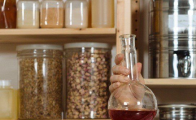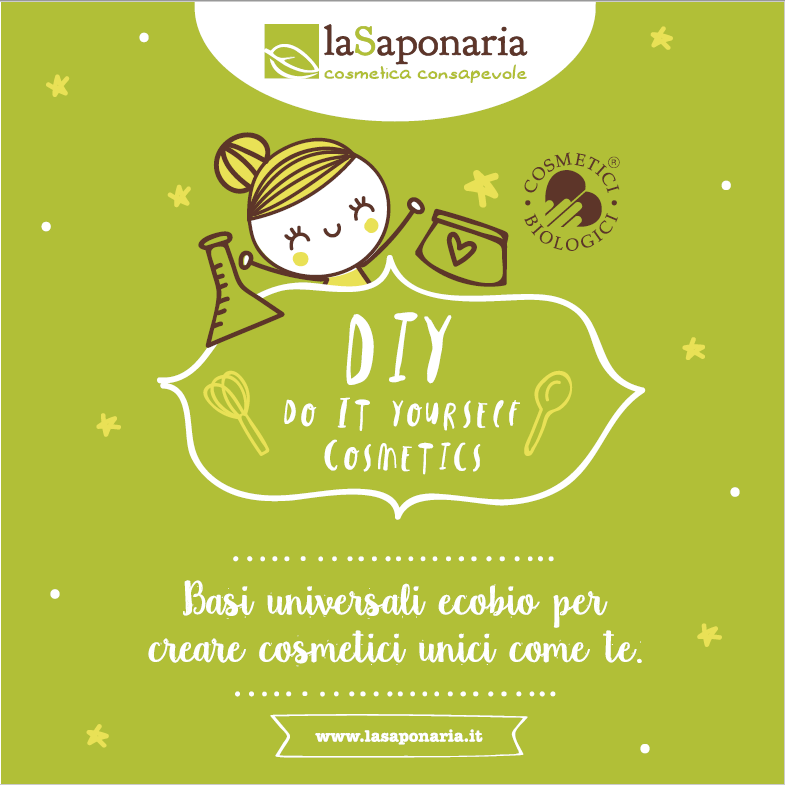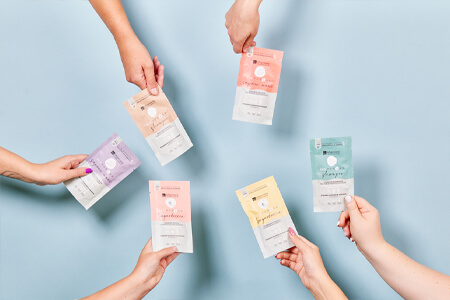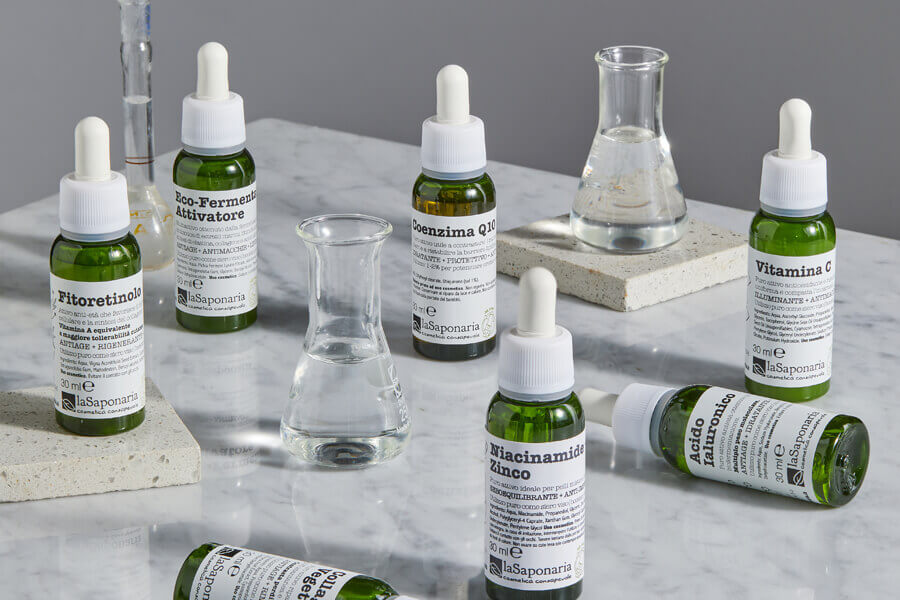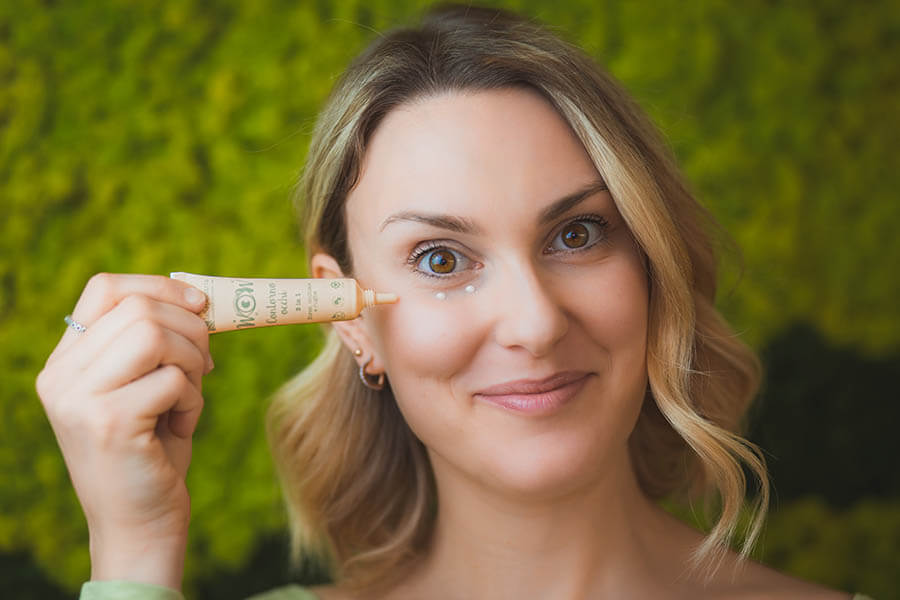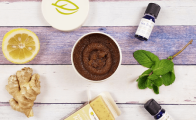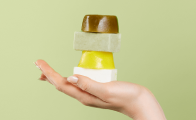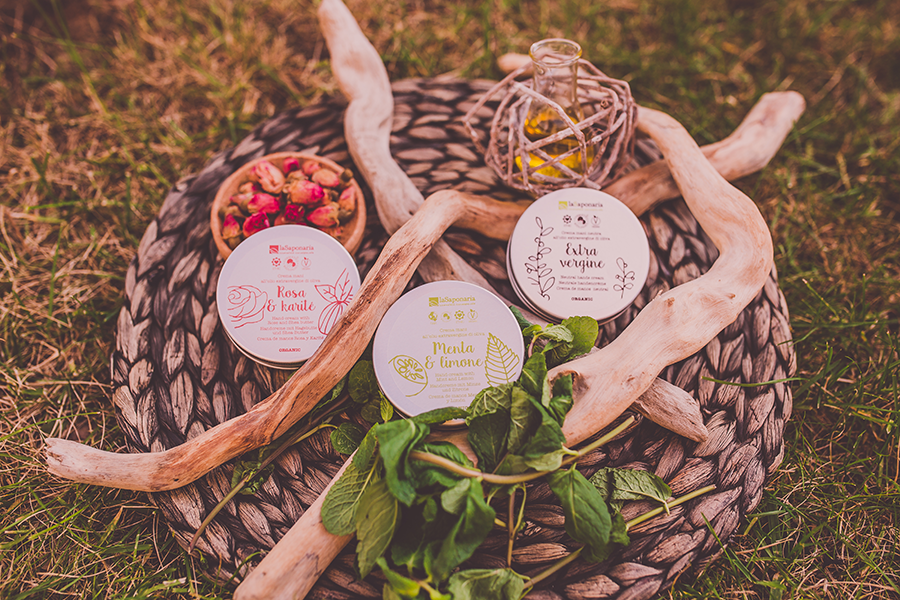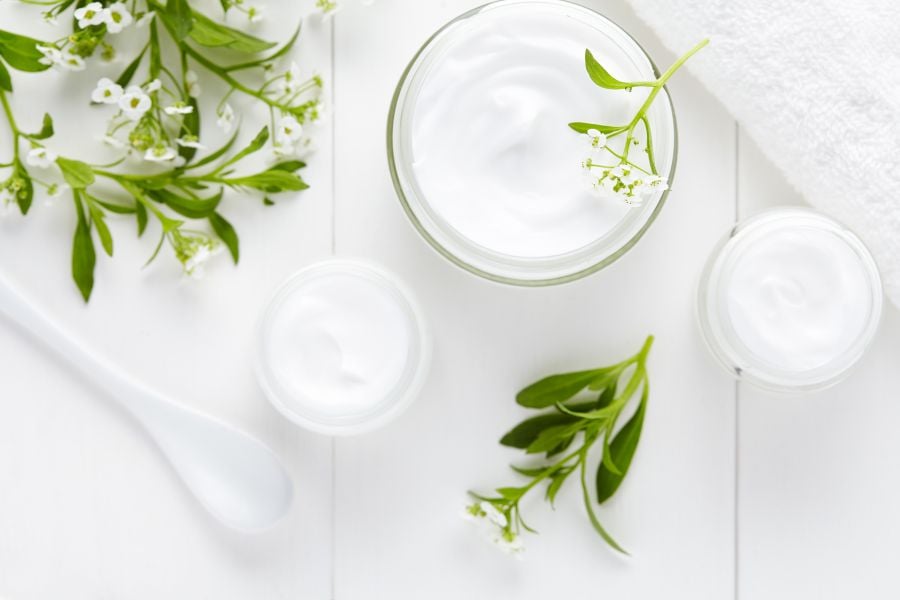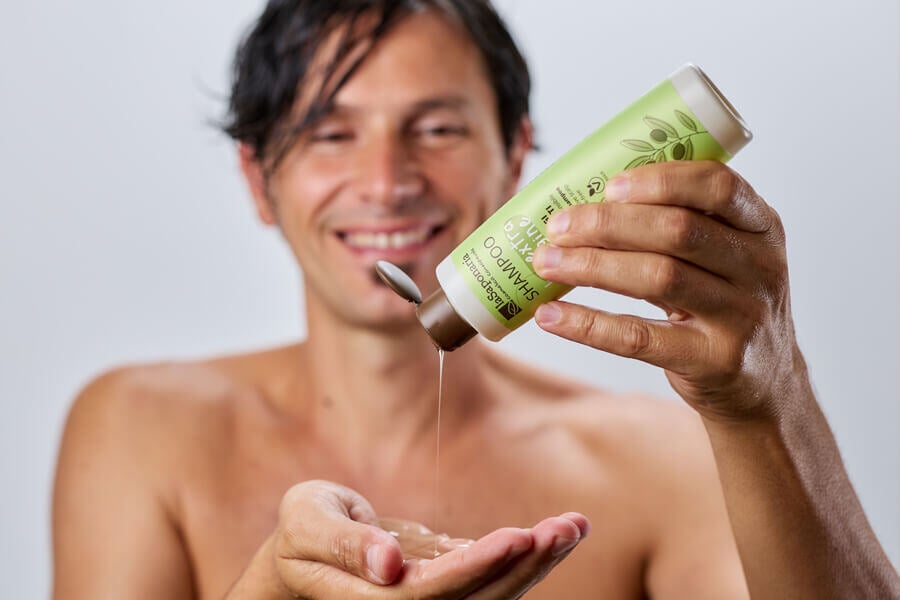The insights of La Saponaria
Dry and chapped hands: causes, natural remedies, and beauty routine
Our hands are often put to test, particularly during cold seasons. Let's take a look at some natural remedies and the right routine to follow for silky and super-nourished hands.
Some of us are more likely than some others, but at least once in a lifetime we all have suffred from dry and chapped hands. We all know that feeling of rough, cracked skin, prone to redness and irritation. It's important to take care of this issue, because it might get worse and worse if it's not taken care of and it could eventually lead to the appearance of small cuts or fissures.
Let's take a look at the causes, symptoms, and natural remedies for dry hands, together with the right routine to follow for silky, super-nourished hands.
Here’s what you’ll find in this article:
• Chapped hands: the causes
• Anatomy of the hands: the hydrolipid film
• Symptoms of dry and chapped hands
• Natural remedies for dry, chapped and cut hands
• Shea butter compress
• Marigold ointment compress
• Sweet almond oil, coconut oil, and olive oil compress
• Hand cream compress
• The natural beauty routine to say goodbye to dry, chapped hands
o Cleansing
o Exfoliation
o Hydration and nourishment
o Protection
• How to take care of brittle nails
• Castor oil
• Aloe gel
• Vitamin E oil
• Conclusions
Chapped hands: the causes
Various causes can lead to dry and chapped hands. Generally speaking, dry and chapped hands are caused by physical and chemical factors, as well as temperatures.
The main causes are:
- Use of aggressive products such as soap or hand sanitiser: as a result of COVID-19, we’re using more alcohol-based hand sanitisers than ever before. While they’re useful to kill bacteria, they can be aggressive, especially on sensitive skin. This inevitably alters the pH of our skin, putting a strain on our hands. The daily use of aggressive, excessively degreasing and low-quality soaps also contributes to dry hands, causing a loss of skin elasticity and irritation
2. Cold and temperature changes: facing bitterly cold weather without the use of gloves, and temperature changes in general, tend to result in chapped skin and peeling fingers and palms: the cold undoubtedly plays an important role, lowering the skin's defences and affecting its lipid balance. But we can also experience problems with dry hands in the summer
3. Smog and air pollution: particulate matter in the air can be another cause of dry hands
4. Salty air, chlorine and UV rays: in addition to the cold, in summer the salty air of the seaside or the chlorine of the swimming pool can contribute to drying out the skin of the hands, as can UV rays, which also contribute to premature ageing, causing the appearance of dark spots
5. Hygiene habits: washing your hands many times a day is sometimes necessary, but it also contributes to dryness, especially if you use soaps that do not respect the pH of the skin and water that is too hot. In addition, incomplete drying can also contribute to dry hands
6. Failure to wear gloves during household chores and contact with water: dishwashing and household cleaning products are often too aggressive for the skin. If you do not wear gloves while using certain household products, you may experience dry hands. The same can happen if your hands are often in contact with water
7. Genetics: dry hands can also be caused by a genetic predisposition, and people within the same family often complain of the same problem
8. Drugs: sometimes, dry hands can be caused by certain types of drugs, such as corticosteroids and topical drugs
9. Skin disorders: certain skin diseases, such as dermatitis or psoriasis, can be responsible for dry hands
The scientific term for abnormally dry skin is xerosis, and it is caused by the alteration of the hydrolipid film that maintains the skin's moisture.
Anatomy of the hands: the hydrolipid film
The hydrolipid film is a thin protective layer that covers the entire skin of the body. It is also known as the hydrolipidic or acid mantle (because it has a slightly acidic pH of 5.5).
It is composed of 95% lipids and 5% water. The lipid phase consists mostly of sebum and a small amount of epidermal lipids, produced by keratinocytes, while the aqueous phase consists of sweat.
This kind of film is responsible for maintaining skin hydration, as well as acting as a barrier against pathogens such as viruses, bacteria and fungi, and to protect the skin from dirt.
When the structure of the hydrolipidic film is altered, it can result in dry and cracked hands.
To restore the hydrolipidic film, we must provide the skin with moisture, both by drinking the right amount of water during the day, and by using moisturising cosmetic products and adopting a number of good habits, such as using gentler products and always wearing gloves during household chores.
Symptoms of dry and chapped hands
If the skin of the hands is dry, it will appear rough to the touch, not very elastic and dehydrated.
The skin may appear wrinkly, duller, and thinner than usual, and tends to be flaky.
In some cases, dry hands may occur together with itching, redness, irritation and inflammation, and small cuts, known as rhagades, may be present.
Although they can appear for various reasons, rhagades on dry hands are due to the loss of elasticity of the skin, which tends to break, leading to the formation of these little cuts.
Fortunately, the problem of dry hands can be solved with some effective natural remedies, and by adopting the right daily routine.
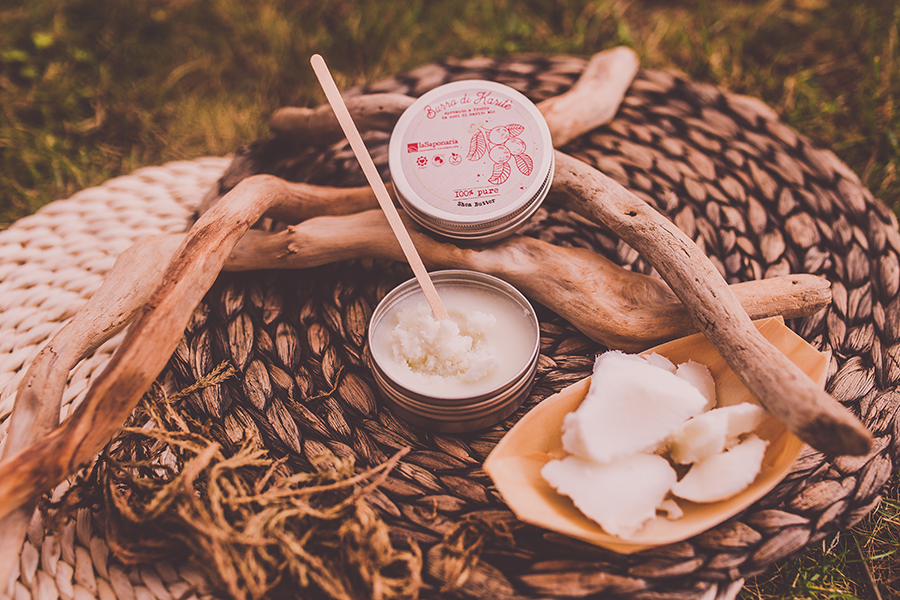
Natural remedies for dry, chapped, and cut hands
Now that we’ve learnt the causes and identified the main symptoms, let us now see what we can do to solve the problem of dry and chapped hands once and for all.
If the situation of your hands is really serious, a shock treatment may be necessary, always using the resources nature offers us.
One excellent remedy are compresses, made with moisturising and nourishing products such as shea butter, marigold ointment, vegetable oils such as sweet almond oil, coconut oil and the simpler olive oil, or with a good hand cream.
Shea butter compress
Shea butter has softening, nourishing and antioxidant properties. This makes it perfect for chapped hands, on which it can be used several times a day. Shea butter not only nourishes the skin, but also protects it from atmospheric agents such as wind and sun. Our advice is to use it to make compresses by spreading a generous amount on your hands and then putting on mittens, or even cotton socks: just leave it on for 1 hour.
Marigold ointment compress
Marigold ointment is super-nourishing, with renowned softening and soothing powers, and has a moisturising and restorative effect on the skin of the entire body. This makes it ideal for treating dry and delicate skin. It can be used as needed for dry or damaged skin, by spreading it on until completely absorbed. You can make a compress with this too, using plenty of product and then wearing cotton gloves on your hands.
Sweet almond oil, coconut oil and olive oil compress
Oils are perfect to thoroughly moisturise and nourish very dry skin, and compresses can also be made with them. Almond oil will work better on skin that is slightly moist. Coconut oil is a good substitute for butters and ointments, thanks to its moisturising power, while grandma’s olive oil remedy remains as valid as ever. The compress should always be made using plenty of product, and applied with the help of cotton gloves.
Hand cream compress
If you can't stand oil, and you don't have any shea butter or marigold ointment on hand, you can also make your compress using a hand cream. The procedure is always the same: apply the product generously and then keep it on for at least 1 hour, always wearing gloves. Do you often spend your evenings watching a film? Then that’s the ideal time for your compress!
The natural beauty routine to say goodbye to dry, chapped hands
After one of the shock treatments suggested above, it’s wise to adopt a proper hand care routine to accompany you throughout the day, allowing you to wave goodbye to the problem of dry hands.
It is important to take care of the skin on your hands every day, to avoid having to intervene before the situation worsens.
Here’s the perfect beauty routine for dry, chapped hands:
Cleansing
Always wash your hands using a mild soap, such as our extra virgin olive oil soaps. Especially when you need to wash your hands often, it’s a good idea not to use soaps that are irritating, or that do not respect the correct pH of the skin. Stay away from cleansing products that contain aggressive surfactants, as they are often among the top causes of dry, chapped hands. Also remember to use gloves when doing household chores: dishwashing and household cleaning products are often too aggressive for the skin.
You can also try our powdered soaps to re-hydrate if you are looking for gently hands soaps. They are perfect for those who want to cut disposal packagings off! Since powdered soaps come in paper bags, you will only need an empty dispenser to pour the soap in together with 200ml of water. Here it is your gently and zero-waste hand soap!
Exfoliation
This step can only be carried out if the skin is unbroken and not too irritated. If you’re prone to dry hands, however, a good way to keep them soft is to use a mild soap that can perform a gentle scrub action, such as our Poppy and Cypress Soap,with an exfoliating action, or our Almond and Ginger Body Soap. To avoid hardening and for softer skin than ever before, you can also use our Lemongrass and Mint Scrub. To exfoliate, wash your hands thoroughly and massage the scrub in using your fingertips, insisting on the rougher parts.
Hydration and nourishment
Always apply a hand cream after cleansing to prevent the skin from drying out and cracking. It is best to choose a cream that absorbs quickly and does not leave your hands greasy. You can opt for rose & shea hand cream, for its super-nourishing power, or for mint & lemon hand cream, for its soothing and refreshing power. If you prefer something unscented, you can choose the extra-virgin hand cream, with its moisturising and protective power.
Protection
At this point, if you leave the house and need to take public transport or go shopping, it is a good idea to rely on a protective hand sanitiser, preferably one that is gentle and skin-friendly.
It’s also easy to make your own hand sanitiser. Hand sanitiser can also be used on hard surfaces, i.e. on shopping trolleys, door handles, steering wheels, computer keyboard and mouse, and mobile phones. If you have super-sensitive or particularly irritated hands, you can sanitise hard surfaces and wear a pair of gloves, instead of spraying hand sanitiser on your hands.
As soon as you’re back home, start again from step number 1.
How to take care of brittle nails
Dry and cracked hands are often accompanied by weak nails that tend to break. We can also take care of brittle nails by using products to strengthen them.
If you are looking for a hand cream that protects, hydrates, and also nourishes both your hands and your nails we suggest you our Hand and Nail Cream with phytokeratin, castor & lemon. It enriched with nourishing, antiaging, and protecting active ingredients, and it is heavenly scented!
It contains organic lemon essential oil and castor oil, as well as phytokeratin to help strengthen brittle nails. Hyaluronic acid, vitamin F and bisabolol moisturize and nourish hands and cuticles, protecting them from the cold and external agents and leaving them soft and bright. It strenghtens, nourishes, and protects both the hands and the nails.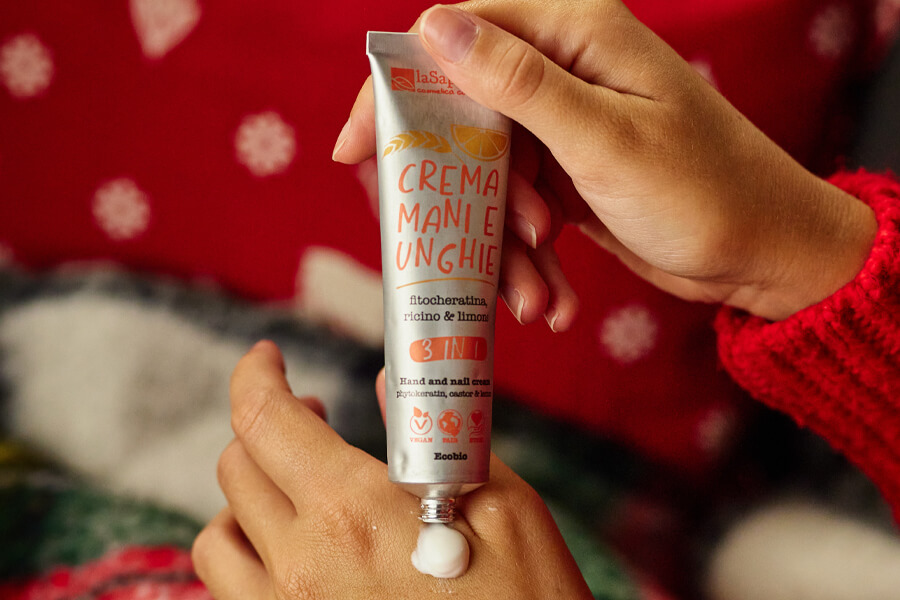
What about specific nail treatments? In this case too, nature comes to help us: we recommend you use castor oil, aloe gel, or a vitamin E oil. Here are some must-have beauty tips for their care
Castor oil
You can apply castor oil to your nails with a small brush, just as you would apply nail polish, once or twice a day. Castor oil is able to strenghten and thoroughly moisturise nails, and but it also strengthens eyelashes, eyebrows, hair and beards.
Aloe gel
Another active ingredient with super-strengthening powers for nails is aloe gel, a versatile elixir for the body that can be used in many ways. As for the nails, you can also apply it with a brush every night, just as you would apply nail polish.
Vitamin E oil
We have created and formulated this oil from the baby care line with the super-sensitive skin of nursing mothers and newborn babies in mind. But it’s also proved perfect for nails and cuticles! The Vitamin E it contains is perfect for counteracting the dehydrating effects of hand sanitisers. Simply massage it into the nails, cuticles and surrounding skin every night before bedtime.
Conclusions
In this article, we’ve looked at the symptoms, causes and natural remedies for dry hands, and the routine to follow to avoid this phenomenon, without neglecting nail care. Adopting the right habits and the right hand routine can be of great help to counteract the problem of dryness.
If you have dry hands and want to take care of them as best you can, we recommend choosing products from companies that produce cosmetics in a responsible way, with formulations free from harmful substances and with natural, quality ingredients.
La Saponaria produces ecological, organic cosmetics that respect both our consumers and the environment. Our hand and nail care products have been formulated with valuable organic ingredients that will breathe new life into your dry, chapped hands. And like all our cosmetics, they are certified organic, made using artisanal methods and with sustainable packaging.
Discover our line of conscious cosmetics!

Written by Simona
She is La Saponaria’s digital writer: always juggling a newsletter to send and a blog article to publish, she lovingly takes care of our social media channels and our e-commerce.



